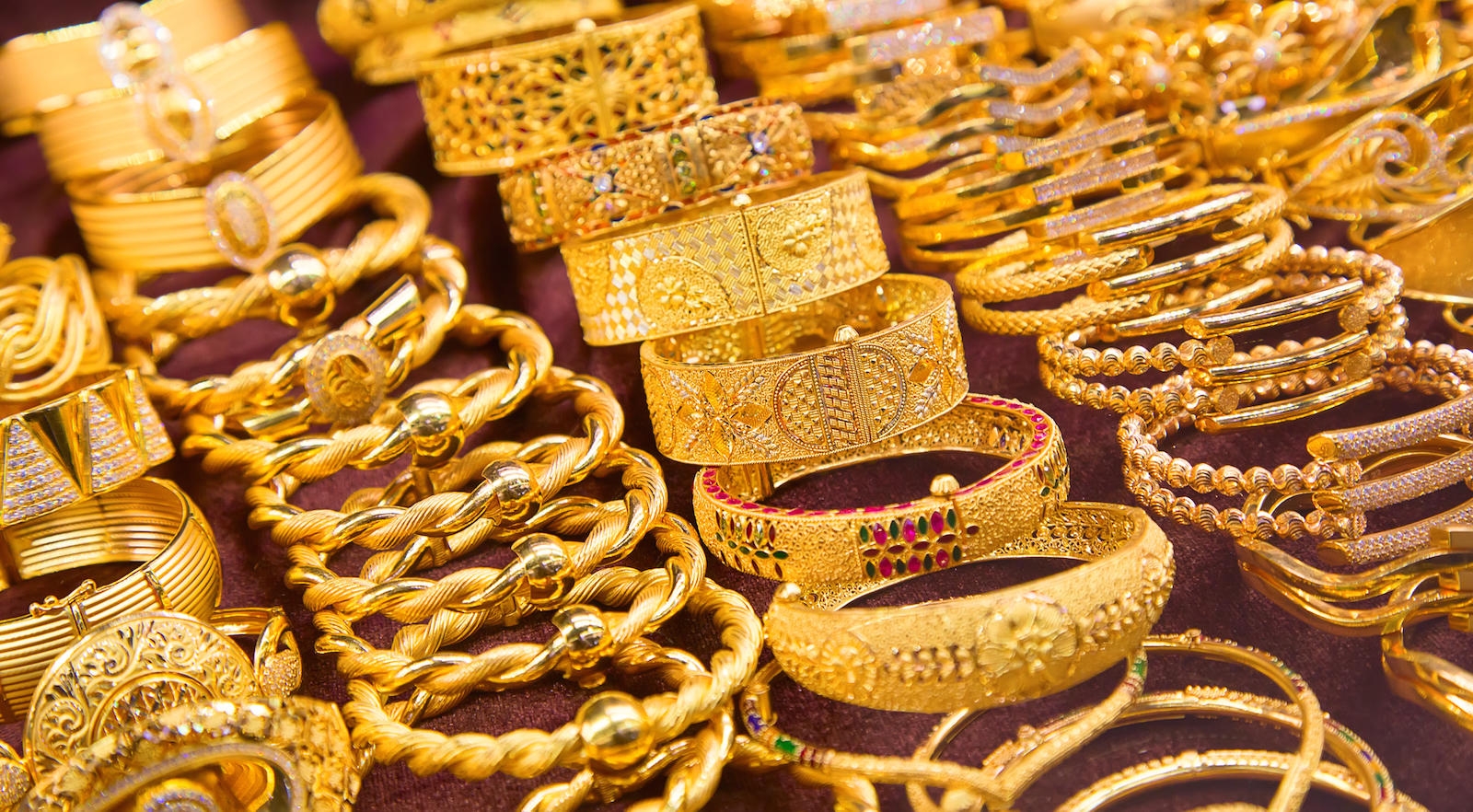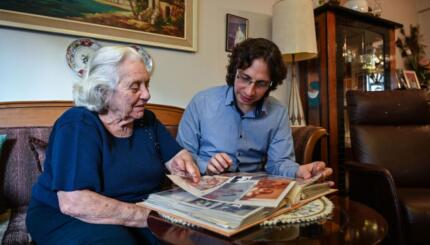Commentary on Parashat Tetzaveh, Exodus 27:20-30:10; Deuteronomy 25:17-19
The Torah portion Tetzaveh continues the instructions for the building of the Mishkan, or Sanctuary, which were begun in last week’s portion, Terumah. The Mishkan is the center of the Israelite camp, the locus of the Divine Presence on earth, and the precursor of the Temple in Jerusalem. Appropriately, the instructions feature a long list of rare metals, fine skins and fabrics, precious gems and gold. A lot of gold.
In the Torah portions Terumah and Tetzaveh, gold is mentioned nearly 50 times — far more than any other material. Gold covers most of the Mishkan and its furniture, including the Holy Ark, which is topped with two solid gold cherubs. The High Priest, who leads the service of the Mishkan, is draped in gold: gold chains, gold bells, gold rings, gold settings for precious stones; there is even gold woven into the fabric of his garments. A solid gold headplate crowns the ensemble.
Such a finely adorned sanctuary and spiritual leader would not be out of place in our own time. Our society has a passion for gold and jewelry. We mark significant life transitions with jewelry. We regard finery as a symbol of sophistication, love, and inherent worth.
The Impact of Gold
But today, behind every gold ring are literally mountains of toxic waste and trails of destruction. According to the US Environmental Protection Agency (EPA), hard rock mining, which includes, although is not limited to, the mining of gold, releases almost half of all toxic pollution in the US, with a clean-up cost in the tens of billions of dollars.
With your help, My Jewish Learning can provide endless opportunities for learning, connection and discovery.
Gold mining utilizes toxic chemicals, releases harmful elements previously bound up in the rock ore, and consumes massive amounts of water. Here are just a few examples of problems associated with gold mining:
The planet’s bulk gold deposits have nearly been depleted, so many of today’s mines use a process known as heap leaching. To produce one ounce of gold, at least 26 tons of ore must be mined from the earth, and then a cyanide-solution is poured over the mound to separate the gold from the rock so the miners can collect the remaining microscopic gold particles.
Cyanide use is effective and cheap, but accidents have happened, affecting wildlife and river systems in the vicinity of the mine. In 2000, a mine reservoir in Romania broke its dam, causing a toxic waste spill that polluted a tributary of the Danube River. That accident, the second that year, was described as the worst environmental disaster since the 1986 Chernobyl nuclear reactor accident in the Ukraine.
The United Nations Development Programme’s Global Mercury Project states that between 30%-40% of all man-made mercury pollution in the world comes from small scale or “artisanal” gold mining, a situation the Project describes as “of grave ecological significance.”
The mercury is used to separate the gold from the ore, and is then volatilized off to purify the gold; the mercury is then disposed of, often into the local streams. Up to 1000 tons of mercury a years are released annually from artisanal gold mining. The severe impact of mercury releases from mining camps goes beyond streams into soils, vegetation, and also the contamination of fish, making it a major contributor to the long-range transport of mercury throughout the world.
Exposure to mercury by the indigenous populations who practice artisanal mining of gold is a major issue for native tribes in the Amazon Basin, in Africa, Indonesia, Philippines, Laos, and China. Estimates say there may be over 10 million people involved in artisanal gold mining, up to 500,000 women and children directly mining gold and being exposed to mercury. There is little or no provision of health services to miners or their families.
Holy to the Lord
Injustice. Pollution. Poison. Waste. This is the legacy of today’s gold. And yet the Torah prescribes the clothing of the Priests “L’kavod ul’tifaret–for honor and splendor (Exodus 28:2).”
The exquisite golden appointments of the High Priest and the Mishkan concentrated the power of the world’s gold on a singular aim–creating a space for God’s presence in the midst of humanity. It would be impossible for this sacred craftsmanship to be done with dirty gold.
In fact, the Mishkan was made entirely of reused and recycled materials. As we see in the Torah portions Terumah and Ki Tissa, the Children of Israel donate the materials for the Mishkan as part of a process of spiritually rectifying and elevating the wealth taken from Egypt. Through the building of the Mishkan, we learn that all of our possessions should be sourced and used conscientiously, especially the most precious.
The High Priest’s pure gold headplate bore the engraved slogan “Holy to the Lord.” Gold that originates in injustice and destruction and is used to satisfy individual desires does not reflect this holy potential. Such adornments serve our vanity, but do not promote our awareness of the Divine, or the unity of our world. The time has come to follow the Torah’s example by ensuring that our gold is attained and used with a pure conscience.
The first step in any process of Divine awareness and environmental consciousness is education. The Internet has a vast collection of resources on mining practices and problems. Notable sites include EarthWorksAction and No Dirty Gold (a cooperative project of Earthworks and Oxfam), which feature information and opportunities to take action to promote safer mining practices.
A concise list of mining accidents can be found here. Most large mining corporations (even those that use cyanide leaching processes) feature information on social and environmental concerns. After researching the relevant issues, consider contacting local and federal government representatives to advocate for safer mining practices and corporate accountability. Alternative mining processes can be explored and supported, like those described here.
As the truth about gold mining becomes too apparent to ignore, jewelry producers and retailers are taking steps to align themselves with ethical gold mining and acquisition. Most notably, Michael Kowalski, Chairman and CEO of Tiffany & Co., wrote a letter in 2004 to the chief of the US Forest Service, asking him to reverse Forest Service support of a proposed mining project in Montana.
Tiffany and other major jewelry retailers have signed on to an ethical gold campaign sponsored by No Dirty Gold. The campaign suggests purchasing gold only from retailers who pledge to use ethical, environmentally safe gold.
Of course, even ethical mining leaves a mark on the earth. Recycling and reusing old precious metals and gems is the most environmentally friendly way to attain new, personalized jewelry. Companies like Green Karat are dedicated to increasing the recycled gold jewelry market.
There is also a grassroots movement of boutique jewelry artists who only use recycled materials. Many of us have collections of old jewelry from parents and grandparents that, all too often, sit in jewelry boxes or safe-deposit boxes. Recycling and reusing these beloved heirlooms creates precious new pieces that honor the memory of the past while promoting a viable and ethical future.
The ultimate challenge is the cultivation of a holy, honorable, and harmonious relationship with gold. Let us reevaluate our perceived need for gold, and ask ourselves if the jewelry we buy truly reflects our values.
As we adorn ourselves with gold, are we aware of the destruction is it causing the earth, as well as the villagers and animals living near the gold mines? As we celebrate our happiest occasions with traditional gifts of gold jewelry, are we linking our joy to God’s joy over the fullness of the earth? As conscious Jews, we must start viewing our use of gold through the pure glimmer of the High Priest’s golden headplate, and be sure that we are adorning ourselves not just in splendor, but with honor and holiness.
Suggested Action Items:
1. Educate yourself by visiting the sites mentioned above, and sign on to the No Dirty Gold campaign
.
2. Reflect carefully when purchasing gold: is your purchase expressing your values? Contemplate recycling a family heirloom. For example, have your grandmother’s large gold ring melted down to create a wedding ring that fits your taste. Or acquaint yourself with Green Karat jewelry and consider buying from them
.
3. Speak to others about what you’ve learned here. Many people are simply unaware of these issues.
Provided by Canfei Nesharim, providing Torah wisdom about the importance of protecting our environment.
Torah
Pronunced: TORE-uh, Origin: Hebrew, the Five Books of Moses.



